Discover 10 hidden attractions, cool sights, and unusual things to do in Antigua (Antigua and Barbuda). Don't miss out on these must-see attractions: Nelson's Dockyard, Falmouth Harbour, and Shirley Heights. Also, be sure to include Boggy Peak in your itinerary.
Below, you can find the list of the most amazing places you should visit in Antigua (Saint John).
Table of Contents
Nelson's Dockyard
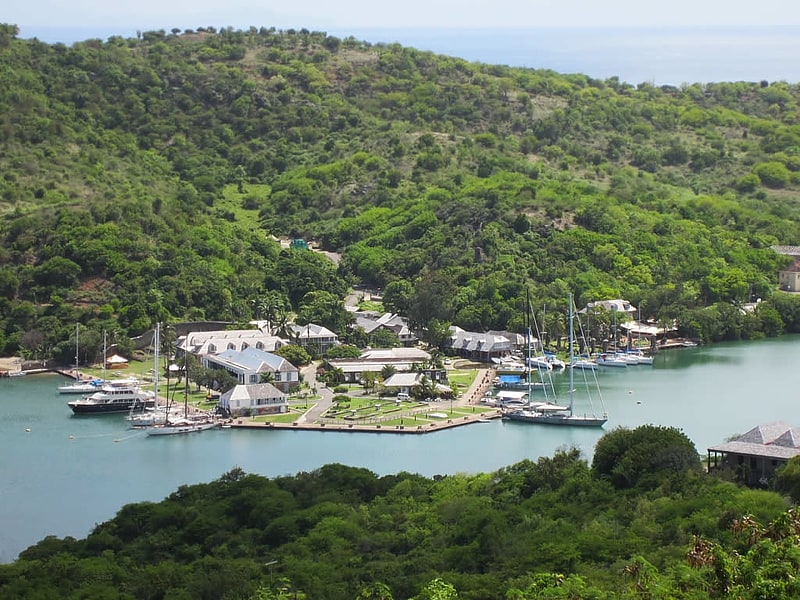
Museum in Antigua and Barbuda. Nelson's Dockyard is a cultural heritage site and marina in English Harbour, located in Saint Paul Parish on the island of Antigua, in Antigua and Barbuda.
It is part of Nelson's Dockyard National Park, which also contains Clarence House and Shirley Heights, and is a UNESCO World Heritage Site.
It is named after Admiral Horatio Nelson, who lived in the Royal Navy Dockyard from 1784 through 1787.
Nelson's Dockyard is also home to some of Antigua's sailing and yachting events such as Antigua Sailing Week and the Antigua Charter Yacht Meeting, as well as the 2015 and 2016 International Optimist North American Championships.[1]
Address: St. John's, Antigua
Falmouth Harbour
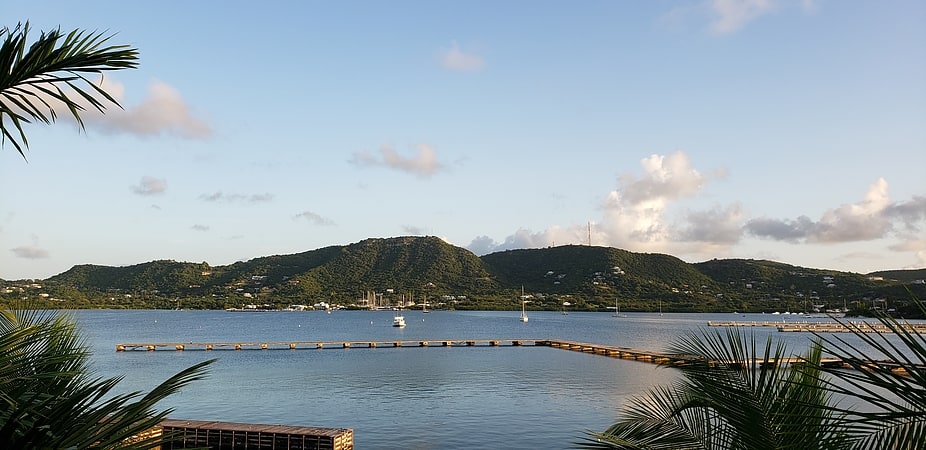
Bay in Antigua and Barbuda. Falmouth Harbour is a horseshoe-shaped bay and natural harbour on the far southern coast of the island of Antigua in Antigua and Barbuda.
It is located within Saint Paul Parish.[2]
Shirley Heights
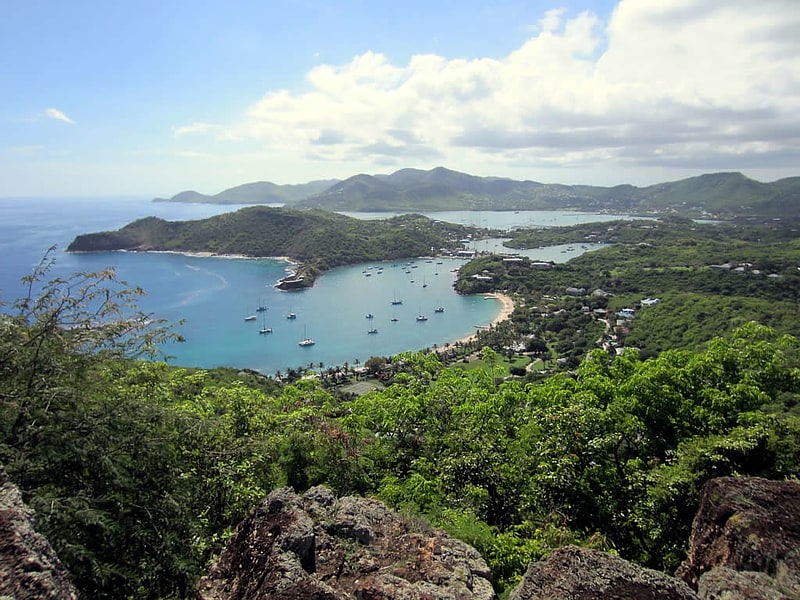
Lookout, Historical place
Boggy Peak
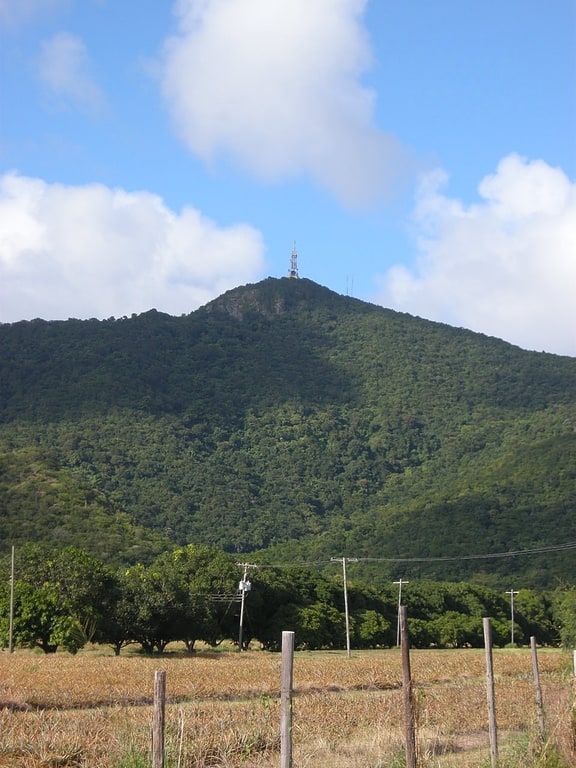
Island's highest point and national park. Boggy Peak is the highest point of the Shekerley Mountains on the island of Antigua. It lies in the southwest region of the island, and rises to a height of 402 metres.[3]
Five Islands
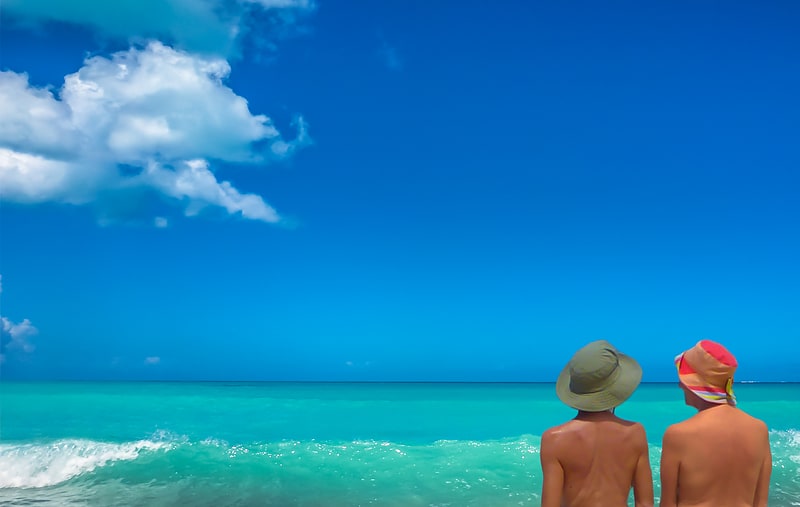
Village on Antigua, Antigua and Barbuda. Five Islands Village is a village located on the northwest coast of Antigua, within Saint John Parish in Antigua and Barbuda.[4]
Signal Hill
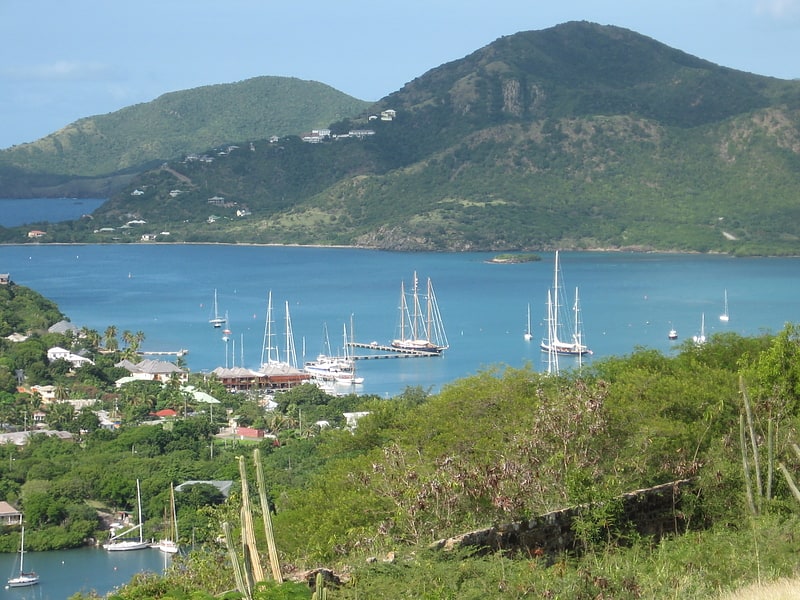
Mountain in Antigua and Barbuda. Signal Hill is a mountain and the second-highest point on Antigua island, in Antigua and Barbuda.[5]
Devil's Bridge
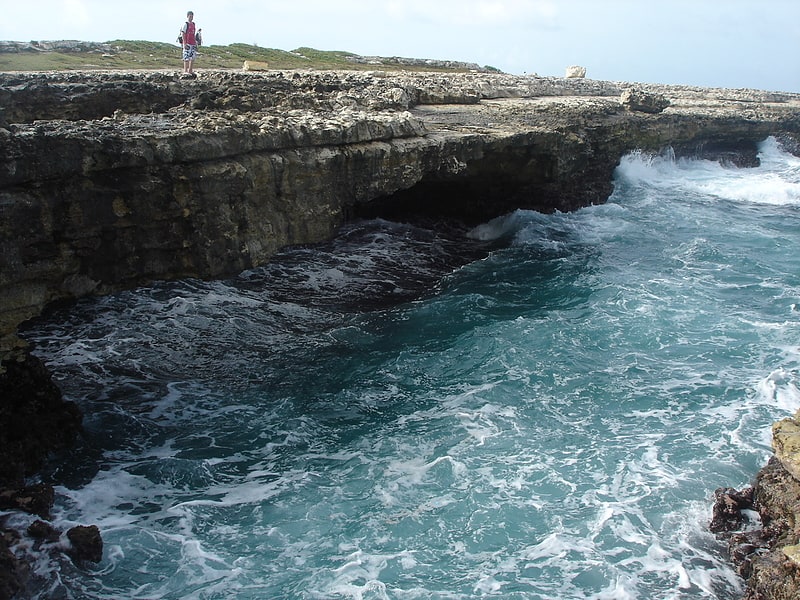
Devil's Bridge is a natural rock arch in eastern Antigua. It is located on the Atlantic coast at 17°6′1.7″N 61°40′42.2″W, near Indian Town Point to the east of Willikies. The area around the arch features several natural blowholes which shoot up water and spray powered by waves from the Atlantic Ocean. This particular location is exposed to waves that are pushed by the Trade Winds with no land between here and Europe. Nearby popular local swimming spots such as Long Cove are sheltered by an offshore reef acts as a natural breakwater. In 2008 it was declared National Park.[6]
Betty's Hope
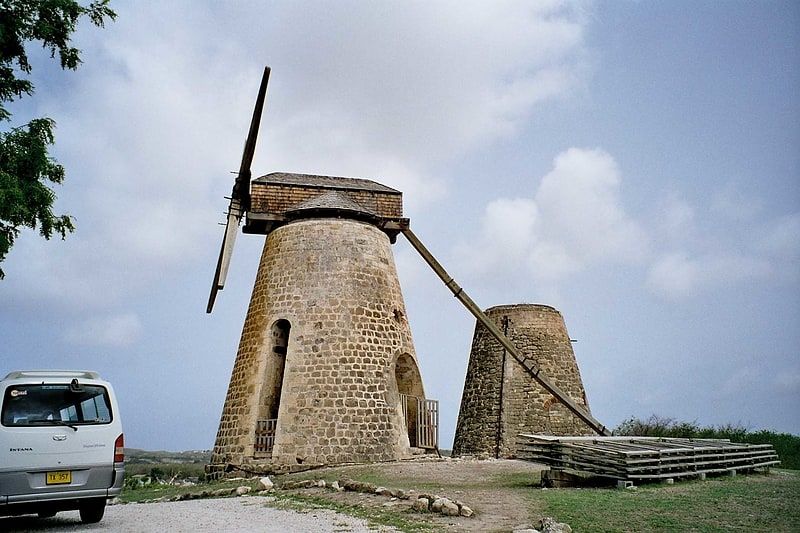
Betty's Hope was a sugarcane plantation in Antigua. It was established in 1650, shortly after the island had become an English colony, and flourished as a successful agricultural industrial enterprise during the centuries of slavery. It was the first large-scale sugar plantation to operate in Antigua and belonged to the Codrington family from 1674 until 1944. Christopher Codrington, later Captain General of the Leeward Islands, acquired the property in 1674 and named it Betty's Hope, after his daughter.
Betty's Hope is no longer operational as a plantation. However, the structures pictured here at the time of restoration works initiated by the Government of Antigua in 1990, under the OEC/ESDU Eco-Tourism Enhancement project, consisted of the twin windmills, the Cistern Complex in serviceable condition, the Great House (Buff or Estate House) in ruins, the Boiling House where sixteen copper hoppers were used to boil cane juice to produce crystalline sugar, and the Still House, a distillery used for manufacturing rum (also seen in ruins without a roof but with elegant arches). Since 1995, the buildings have been developed as an open-air museum with a visitor center and are managed by the Museum of Antigua and Barbuda.[7]
Leeward Islands

Island. The Leeward Islands are a group of islands situated where the northeastern Caribbean Sea meets the western Atlantic Ocean. Starting with the Virgin Islands east of Puerto Rico, they extend southeast to Guadeloupe and its dependencies. In English, the term Leeward Islands refers to the northern islands of the Lesser Antilles chain. The more southerly part of this chain, starting with Dominica, is called the Windward Islands. Dominica was originally considered a part of the Leeward Islands, but was transferred from the British Leeward Islands to the British Windward Islands in 1940.[8]
Dickenson Bay

Beach in Antigua and Barbuda. Dickenson Bay is located on the northwestern coast in Antigua, close to the Cedar Grove.
While Dickenson Bay is not the most secluded beach in Antigua, its white beaches and tranquil seas attract many visitors. A string of large resort hotels give Dickenson Bay one of the island's largest collections of rooms. The beachfront is lined with restaurants, beach bars, and water sports concessions. Several small uninhabited islands and a one-mile long coral reef can be found off the coast of the bay.[9]